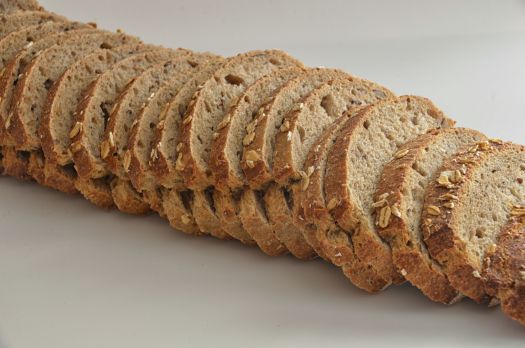Food logging is an incredibly useful tool for losing weight and changing your body. Although it’s not for everyone and you shouldn’t do it forever, tracking your food can teach you a lot.
In Part 1 of this series, I explained why food logging is a keystone habit for improving your health. I also looked at the three different kinds of food logs I use with clients.
Part 2 took a closer look at logging your food using a calorie counting app such as MyFitnessPal. I gave some best practices for logging accurately and using the app as effortlessly as possible.
In this third and final edition of “All About Food Logging,” I show you how to determine the appropriate calorie and macronutrient targets to consume for your goals.
Calories
Calories are a measure of how much energy is contained in what we eat and drink. Our bodies convert energy from food into energy that can be used immediately or stored for later. Throughout the course of the day, our bodies use tons of energy for conscious and unconscious processes.
If you consume more energy through food than you use in a day, your body stores it for later and you gain weight. The reverse is also true; if you consume fewer calories than you burn, your body is forced to tap into its energy stores and you lose weight. Although there are many steps in this process, the bottom line is caloric balance determines whether you gain, lose, or maintain your weight.
If you are tracking your food using an app, you need to know how many calories you should consume to achieve your goals. It takes a certain number of calories to maintain your weight. If you want to gain or lose weight, you need to eat more or less than your maintenance calorie number.
The simplest way to determine how many calories you need is to multiply your bodyweight by a number determined by your goals and activity level:
Maintain weight
- Sedentary: bodyweight x 12-14
- Moderately active: bodyweight x 14-16
- Very active: bodyweight x 16-18
Lose weight
- Sedentary: bw x 10-12
- Moderately active: bw x 12-14
- Very active: bw x 14-16
Gain weight
- Sedentary: bw x 16-18
- Moderately active: bw x 18-20
- Very active: bw x 20-22
These numbers taken from Precision Nutrition Essentials of Sport and Exercise Nutrition, Second Ed.
Although these numbers aren’t perfect, they will help you get started right away.
If you want more precise information, use any one of the numerous calorie calculators found on the web. (Here is one I like) These calculators use different formulas to estimate the maintenance calories your body needs every day.
Each calculator first asks you to input your sex, height, weight, and age. Next, you are asked to select an activity multiplier. If you sit at a desk all day, pick the lowest multiplier. Those of you who already train frequently may consider bumping up the activity level. Read the descriptions on the calculator and pick which feels most appropriate for you.
Once you have your maintenance calories, simply subtract 250-500 calories per day to find how many calories you need to lose weight. Do the reverse if your goal is to gain weight.
None of these numbers are set in stone. As much as it helps, calorie counting is far from an exact science. Calculate your calories and track diligently for 2-4 weeks. If you aren’t seeing any progress, adjust your numbers accordingly.
Aggressive vs Modest Deficit
Everyone wants dramatic results, yesterday. However, weight loss doesn’t usually happen on the schedule we want. Patience is one of the most valuable skills you can practice when trying to change your body. For some people, it can take a very long time to see real progress.
Cutting your calories more aggressively (more than 500-750 calories per day) can lead to faster results. However, this kind of diet doesn’t work well for many people. You will feel much hungrier and more deprived when you slash your calories. This can lead to low adherence and may even push you toward binge eating.
When you lose weight rapidly, you also risk losing your hard-earned muscle. This is bad because muscle mass keeps your metabolism revving and gives the lean, defined look most people desire after they lose weight. It also takes much less effort and time to lose fat than it does to build muscle, so rapid weight loss can be counterproductive.
For these reasons, I recommend most people take a more conservative approach to weight loss. Cutting fewer calories initially means less hunger and better adherence to your diet. You won’t feel as fatigued, which means you will be able to continue to get decent sleep and push yourself in the gym. All of these factors will add up in the long run and contribute to your ultimate success.
Calorie Cycling
Weekly caloric balance is much more important than nailing your calories every day. You can alternate between higher and lower calorie days throughout the week, as long as at the end of the week you have consumed the appropriate number of calories for your goals. Feel free to borrow up to 20% of a day’s calories from the day just before or after.
Many people feel better eating slightly more calories on training days and fewer calories on rest days. Others have more success sticking with their diets when they eat pretty much the same exact thing every day. Experiment to figure out which approach works best for you.
Macros
Macronutrients are smaller building blocks that make up the food we eat. Whereas calories tell you how much energy a food contains, macronutrients tell you what kinds of molecules make up a food. These different molecules are broken down, used, and stored by the body for different purposes. The three main macronutrients are proteins, fats, and carbohydrates. Alcohol is also technically a macronutrient, but we won’t consider it here because it doesn’t really serve a useful purpose in the body.
Protein
If your goal is to look and feel better, protein consumption should be a high priority. Protein is essential to help your body recover from your workouts. Consuming more protein will also help you feel fuller, longer. Aim to consume protein from a wide range of sources to ensure you are eating all of the essential amino acids your body needs.
A great goal is to consume 1 gram of protein per pound of bodyweight. There are a few exceptions to this rule:
- If you have a lot of weight to lose, consuming this protein is impractical and may be unnecessary. Aim for 1g/lb of lean body mass. To find your lean body mass, find your body fat percentage (using a handheld machine is just fine.) Plug in that number (expressed as a decimal) to this equation:
Lean body mass = bodyweight – (body fat % x bodyweight)
If you don’t have a way to test your bodyfat, simply multiply your body weight by 0.7 or 0.8.
- Vegetarians and vegans may struggle to consume this much protein. Aim for a minimum consumption of 100 g protein per day, working toward 0.8g/lb bodyweight or lean body mass.
As you diet, keep your protein consumption high. Always try to cut calories from carbs and fat before cutting them from protein.

Fat
The next macronutrient to determine is fat. Your body needs a certain amount of fat to perform essential tasks. If you cut your fat consumption too low for too long, you risk damaging your hormonal health. Aim to consume a balanced profile of fats from meat, fish, avocados, oils, and nuts.
Set fat to at least 15-25% of total calories. If you prefer a higher fat diet, you may choose to consume up to 40% of your calories from fat.

Carbohydrates
The final macronutrient we will calculate is carbohydrates. Although your body can technically survive without carbs, most people look, feel, and perform their best consuming a healthy amount of carbohydrates. Carbs are the body’s preferred energy source and the most efficient fuel for your brain. If you are trying to gain weight or improve athletic performance, you should consider eating a higher carb diet. Cutting carbs too low for too long can have a negative impact on thyroid health in some people.
Carbs should make up the remainder of your calories after setting protein and fat targets. You can also set your target carbs by multiplying your bodyweight by 1-3 (closer to 1 if trying to lose weight, closer to 3 if trying to gain weight or improve athletic performance.) Unless you are an endurance athlete, it’s best to keep carb consumption beneath 45% of total calories.

Low carb or low fat?
There is always lots of buzz in the nutrition world about whether it’s better to eat a low carb or a low fat diet. A few years ago, everyone avoided fat like the plague. These days, low carb diets are all the rage. It’s difficult for the average person to sift through this sea of information and determine what is true and what is not.
The reality is after you account for caloric intake, it makes very little difference whether you eat more fats or more carbs. There is nothing inherently fattening about either of these macronutrients. The real value in eating higher or lower amounts of carbs or fats is in the way your diet affects the way you feel and perform.
I encourage everyone to experiment with both types of eating and find what works best for them. The best diet is one you can stick to and that leaves you feeling strong and focused throughout the day. Remember calories are king when it comes to losing or gaining weight; everything else is of secondary importance.
I’ve determined my calories and macros. Now what?
After you’ve decided how much you should eat and where those foods should come from, it’s time to enter these numbers in MyFitnessPal.
To enter custom calorie and macronutrient targets in MyFitnessPal, go to “Goals” (located under the “More” tab in the app), then select “Calorie & Macronutrient Goals.” You can now set a daily caloric goal. If you are using a free version of the app, you can only enter macronutrient goals based on percentage of total calories. Simply adjust these percentages to get as close as you can to your ideal marcos.
The free version of MyFitnessPal does not allow you to set different calorie goals on different days. If you want to cycle your calories, you can adjust the calorie goal every morning. You can also keep track of the over/under math yourself, or use your weekly digest to ensure you hit your target over the course of the week.
You can also track your calories and macros using good old pen and paper. I did this myself for a long time before MyFitnessPal was around. It does take more work since you need to look up everything you eat in a database such as Calorie King or the USDA food composition database. If you are at all technically inclined, I definitely recommend digital tracking. Check out Part 2 for detailed instructions on how to use an app like MyFitnessPal.
There’s a ton of information included in this post. If you want some guidance figuring out how to structure the appropriate calories and macros for your goals, or if you just need help building healthier eating habits, please fill out an application for my online coaching program here.

